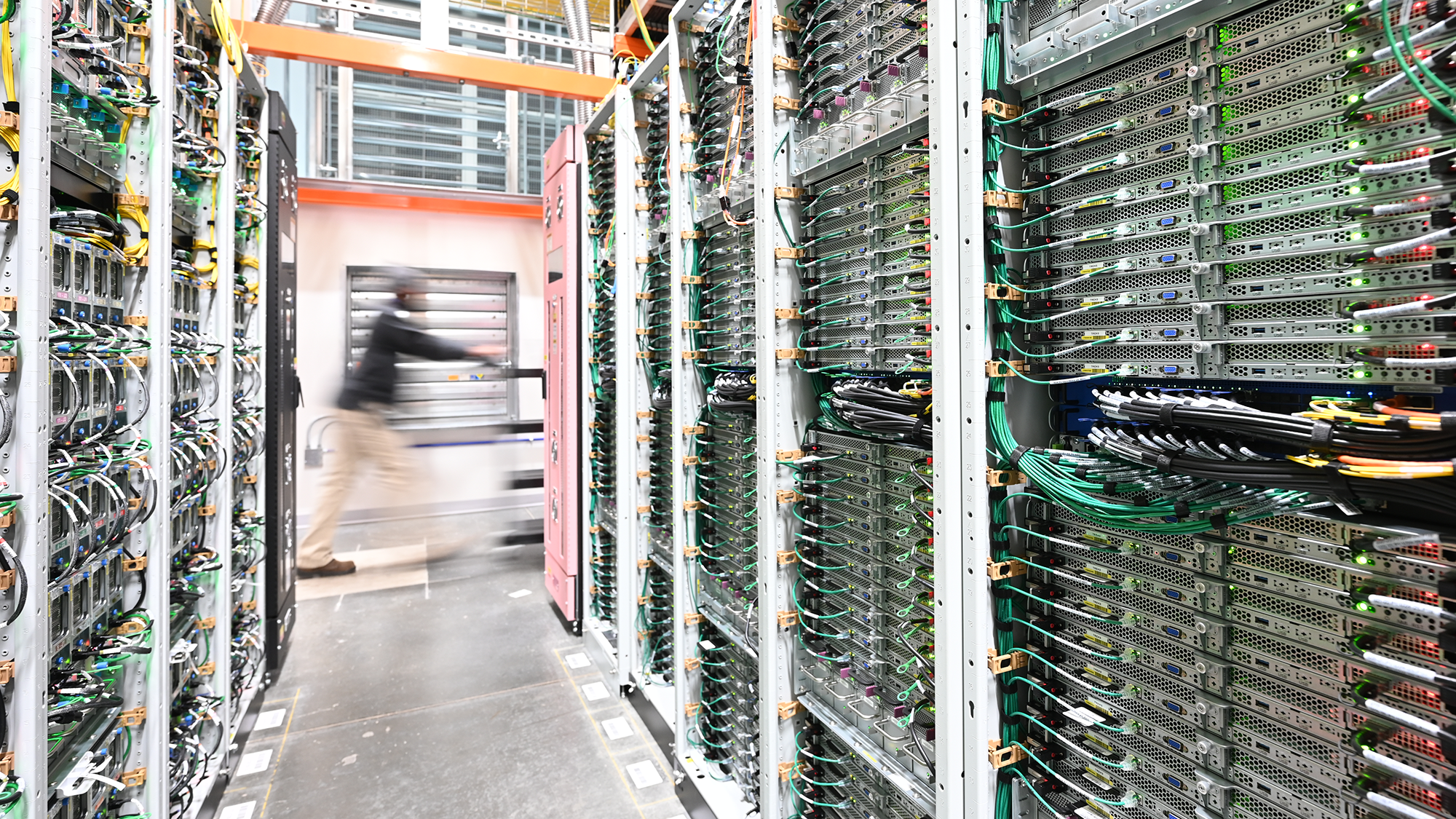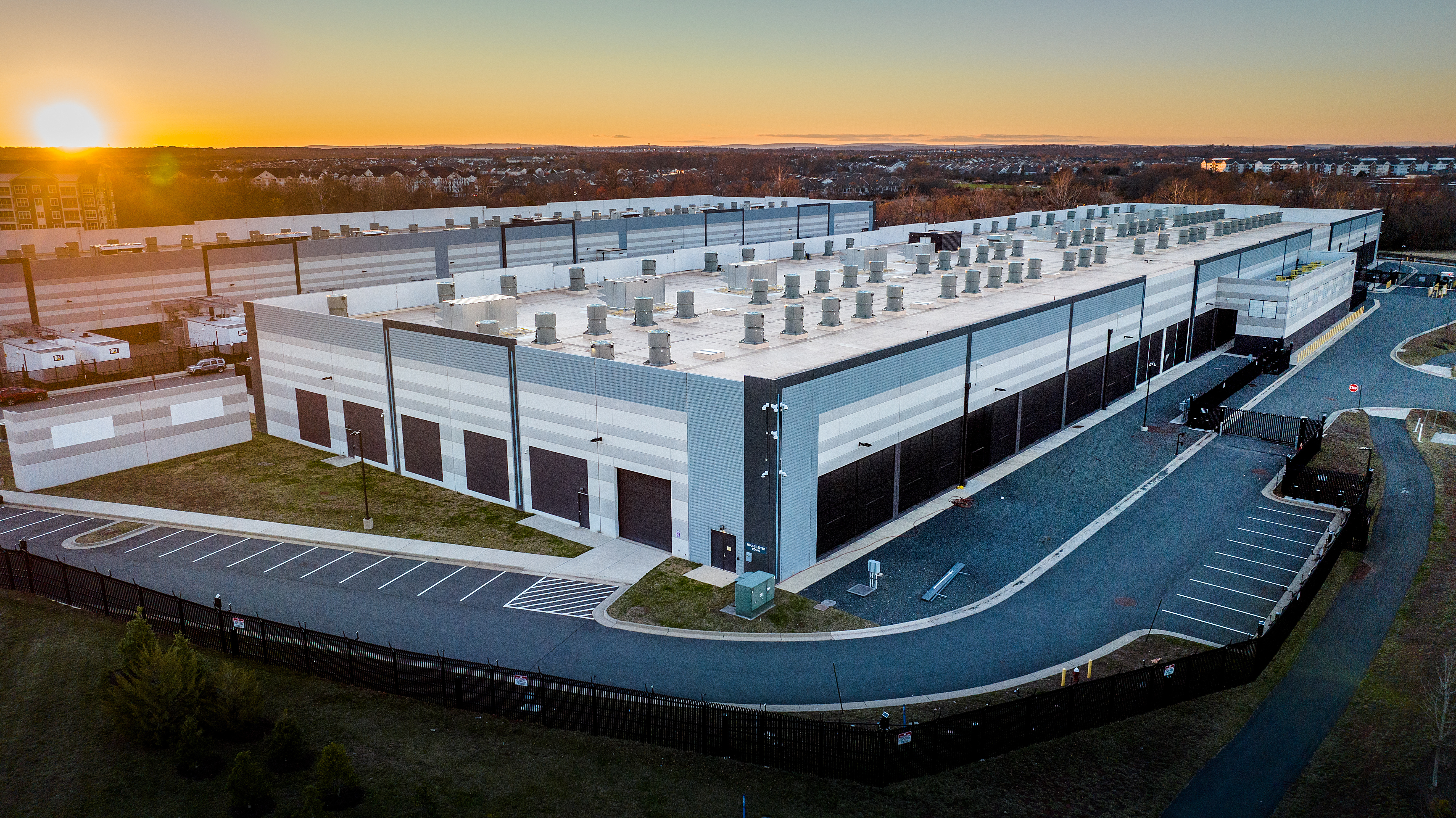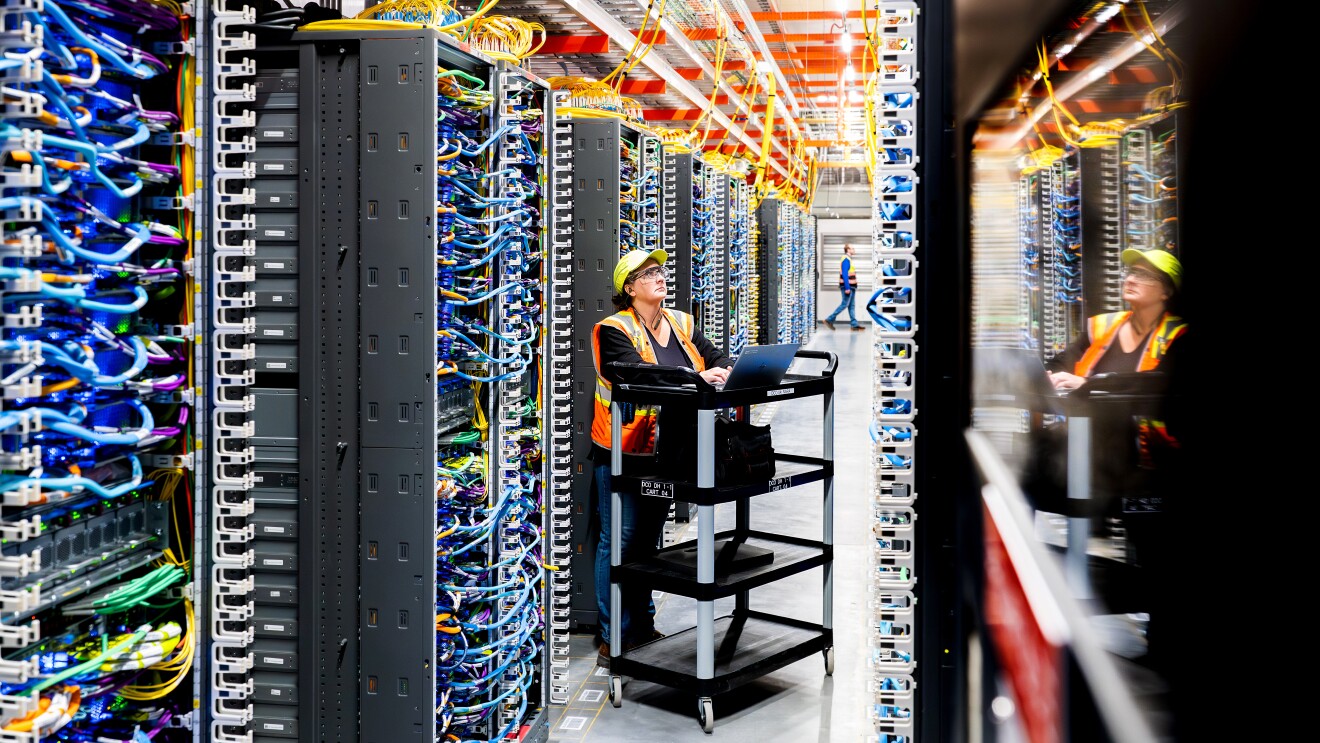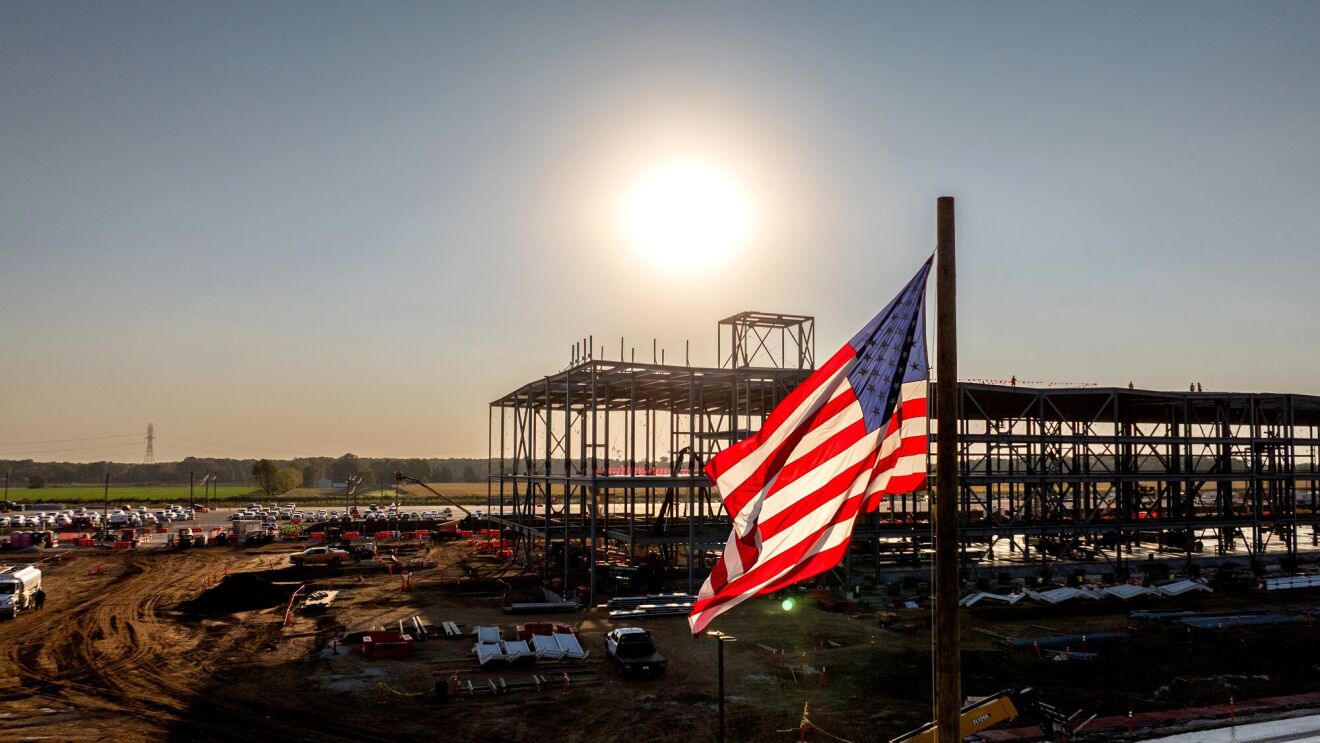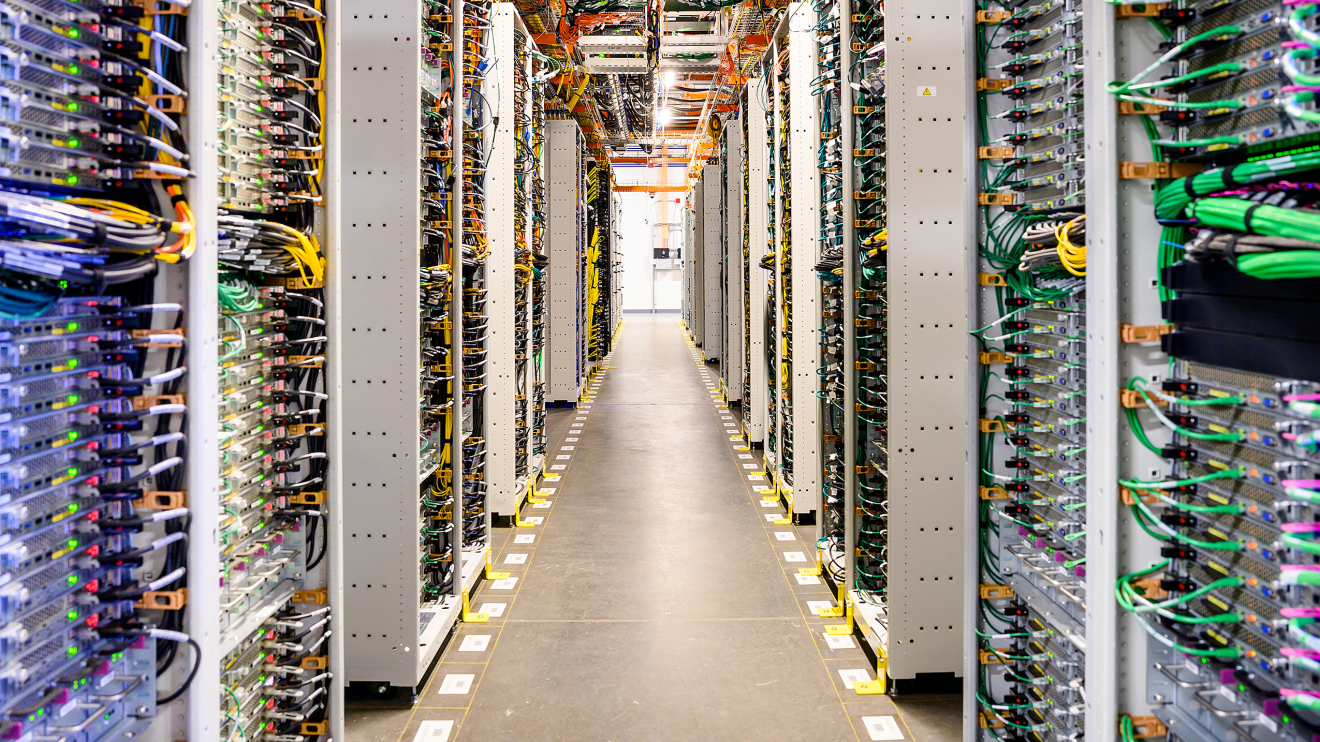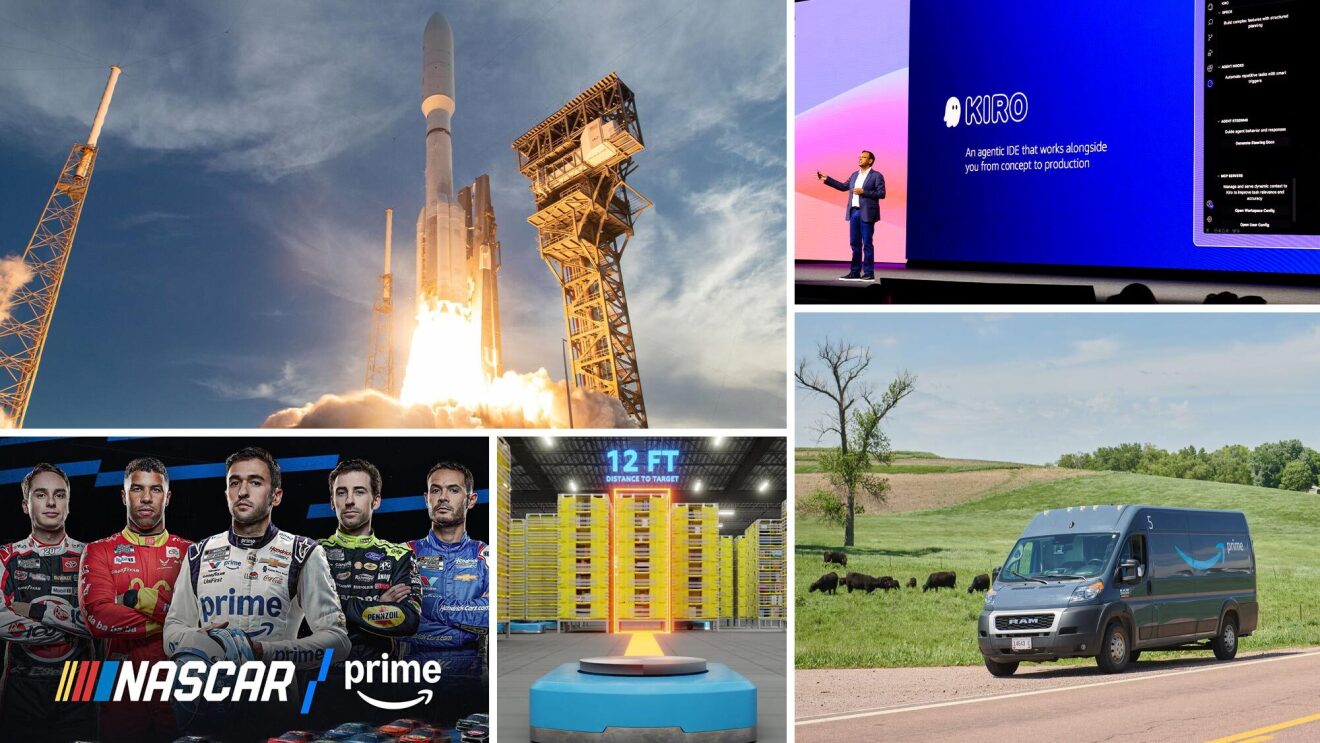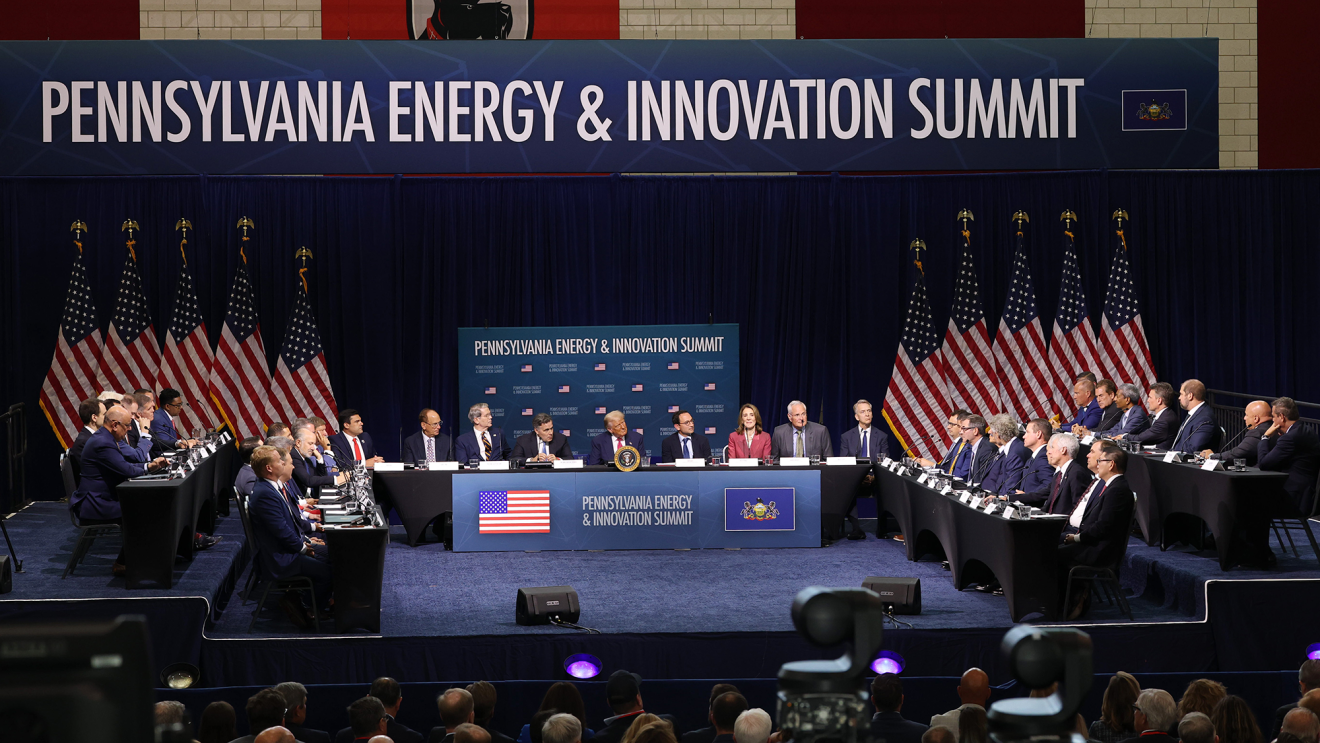Key takeaways
- Amazon has invested over $156 billion in U.S. data center infrastructure since 2011, supporting more than 37,000 jobs annually and generating more than $51 billion to the nation's GDP, with significant local economic impacts in Virginia, Ohio, Oregon, and California.
- Amazon isn't just building data centers—the company is building career paths. Workshops like Fiber Optic Fusion Splicing training and pre-apprenticeship initiatives connect local residents with well-paying tech jobs without requiring traditional four-year degrees.
- Amazon has implemented localized programs and targeted investments in education to benefit communities, supporting over 80,000 U.S. students.
- Amazon is working toward becoming net-zero carbon by 2040 by investing in renewable energy projects, and the company has a water positive goal—returning more water locally than it uses. AWS’s data centers are also more energy efficient, up to 4.1 times more so than on-premises data centers.
Since first establishing cloud computing infrastructure in the U.S. in 2006, Amazon Web Services (AWS) has been creating jobs, economic growth, education and training opportunities, and much more for the people who live and work in the communities where we operate. And as AWS has built out our infrastructure in the nearly 20 years since—both in the U.S. and around the world—we understand the accountability of one of our Leadership Principles, “Success and Scale Bring Broad Responsibility.” This means we begin each day with a determination to make better, do better, and be better for our customers, our employees, our partners, and the world at large. And we end every day knowing we can do even more tomorrow.
For these reasons, we continue to invest in more than just infrastructure to meet the growing demand from our millions of customers, while running our operations as sustainably as possible, in line with our carbon-free energy goals. We also invest in the communities where we build, and the people in those communities.
Here are several ways Amazon is enhancing local communities and helping residents thrive.
Economic impact across the nation
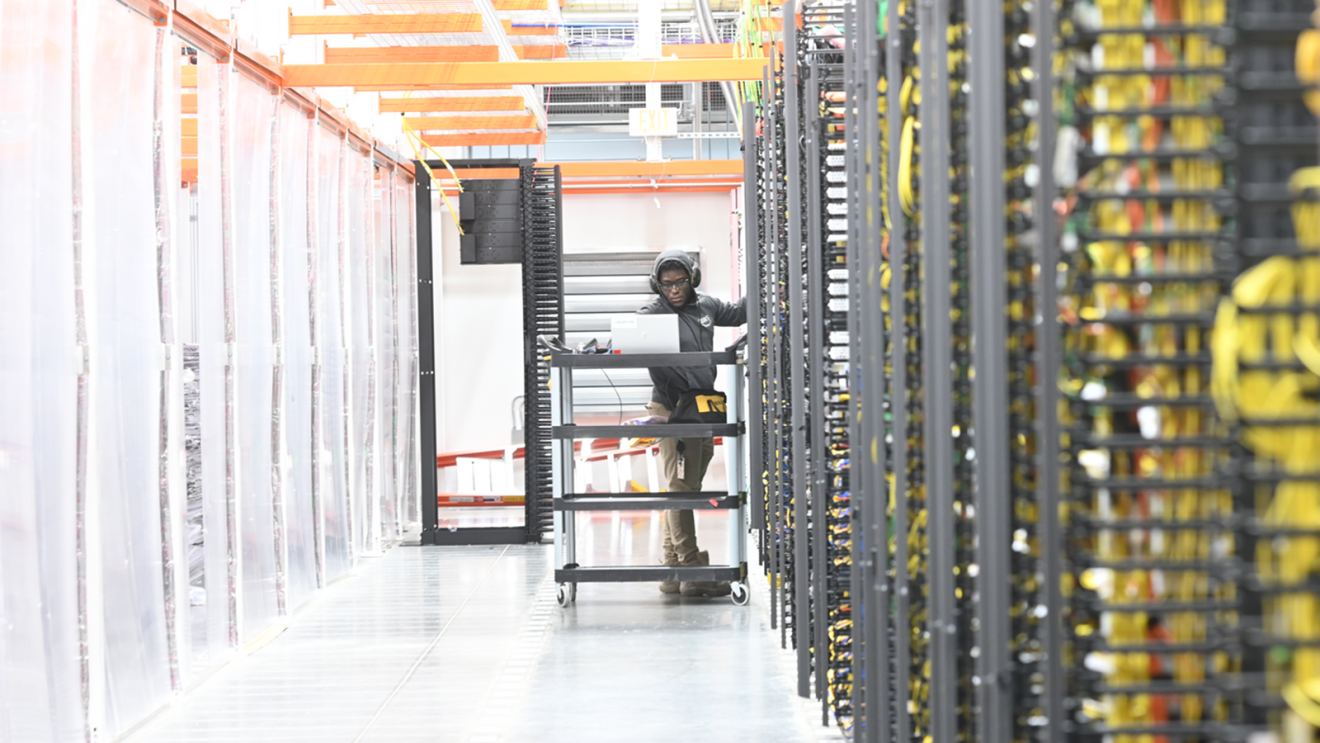
Since 2011, Amazon has invested more than $156 billion in its four AWS infrastructure Regions in the U.S. This investment has supported more than 37,000 full-time equivalent jobs across the country annually, and generated more than $51 billion to the nation’s gross domestic product (GDP). It also has positive ripple effects in communities across the country.
For example:
- In Virginia, Amazon has invested more than $91.5 billion, supporting 20,700 full-time equivalent (FTE) jobs annually, and generating more than $30 billion in GDP in the Commonwealth. In 2024 alone, AWS paid $542.9 million in property taxes and fees in Virginia.
- In Ohio, Amazon has invested more than $19.7 billion, adding $6.2 billion to state GDP and supporting an average of more than 6,490 full-time equivalent jobs annually. In 2024 alone, AWS paid $9.2 million in property taxes and fees in the state.
- In eastern Oregon, Amazon has invested more than $39.2 billion, resulting in an estimated $11.8 billion in GDP to the area and supporting more than 8,320 full-time equivalent jobs annually. In 2024, AWS contributed significantly to the local economy paying $54.2 million in property taxes, fees, and other payments.
- In Northern California, Amazon has invested more than $5.7 billion, resulting in an estimated $3.3 billion in GDP and supporting more than 1,890 full-time equivalent jobs annually. In 2024 alone, AWS paid $20.6 million in property taxes and fees in the state.
Creating pathways to tech careers through skills training
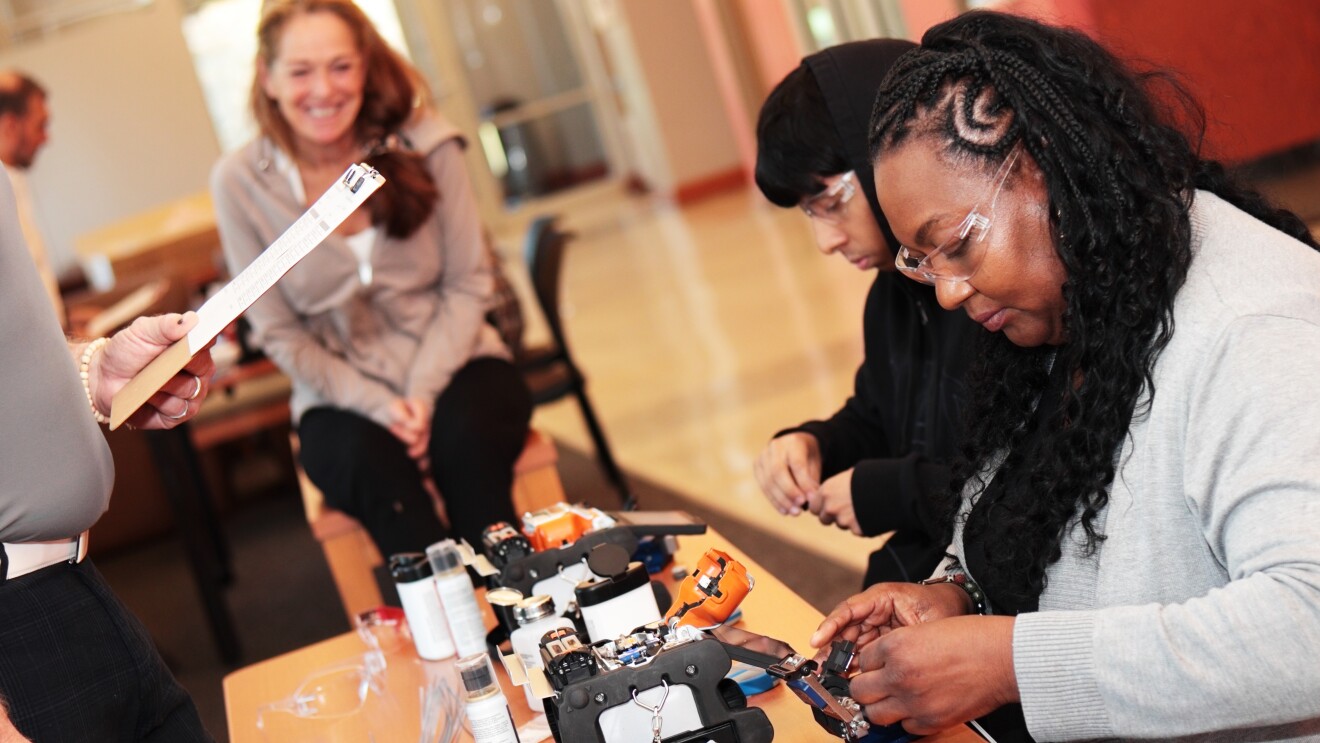 Photo by CAROL PHAM
Photo by CAROL PHAMAmazon invests in local workforce development programs that help individuals gain the skills needed for careers in cloud computing and technology. By collaborating with educational institutions and community organizations, we create opportunities for students, job seekers, and career changers to build in-demand skills, increasing employability and strengthening local economies.
Some examples of our skills training programs include:
- Fusion splicing workshops: The AWS Fiber Optic Fusion Splicing Certificate Course is one of the programs AWS runs locally to help individuals get the skills necessary to repair and install fiber optic cables. In 2024, AWS launched fusion splicing workshops at Tolles Tech & Career Center in Ohio, at Holmes Community College in Mississippi, at Ivy Tech Community College in Indiana, at Kerry College in Ireland, and at University Anchieta in Brazil. This program provides hands-on training in critical infrastructure skills that leads directly to employment opportunities with AWS fiber vendors, such as Team Fishel and NTI.
- Information Infrastructure Pre-Apprenticeship Program: This is a paid four-week program delivering practical, hands-on training that prepares participants to enter careers that build, connect, power, and operate the infrastructure supporting the information economy. The curriculum—built by AWS and our contractors—includes hands-on learning in job safety, electrical and mechanical systems, fiber, and data center operations.
- Information Infrastructure Workshop (I2W) for Educators: This is a one-day workshop to help education and workforce leaders better understand the physical layer of cloud computing and our information economy, and the many different careers that are available.
These programs have positively benefited individuals like Hanson Tram. Initially pursuing nursing to please his parents, Tram soon realized his true passion was to be a software engineer, and as a first step, he looked for a way to develop his technical skills while earning a paycheck. His breakthrough came when he discovered AWS’s Information Infrastructure Pre-Apprenticeship Program in Mississippi. Taking a leap of faith, Tram relocated to participate in the month-long program. In February 2025, his persistence paid off when he secured a position as a data center operations technician at AWS, maintaining servers and computers in a hands-on environment.
Supporting local jobs

Our infrastructure brings a number of highly skilled, well-paying jobs to the local economy. AWS supports jobs directly by purchasing goods and services from local businesses, and indirectly through business-to-business transactions in the AWS supply chain. We also include induced jobs in the broader economy by compensation provided to our employees and workers in the AWS supply chain where they will go spend money in their community and support small to medium-sized local businesses.
The kind of roles we hire for include data center engineers, support engineers, network specialists, engineering operations managers, security specialists, and many more. Amazon’s investments in our data center infrastructure also support jobs in the skilled trades, such as electricians, fiber-optic technicians, and heating, ventilation, and air conditioning (HVAC) technicians. And we support jobs in manufacturing and supply chains, such as engineering technicians, logistics specialists, and warehousing and delivery associates.
Supporting community organizations
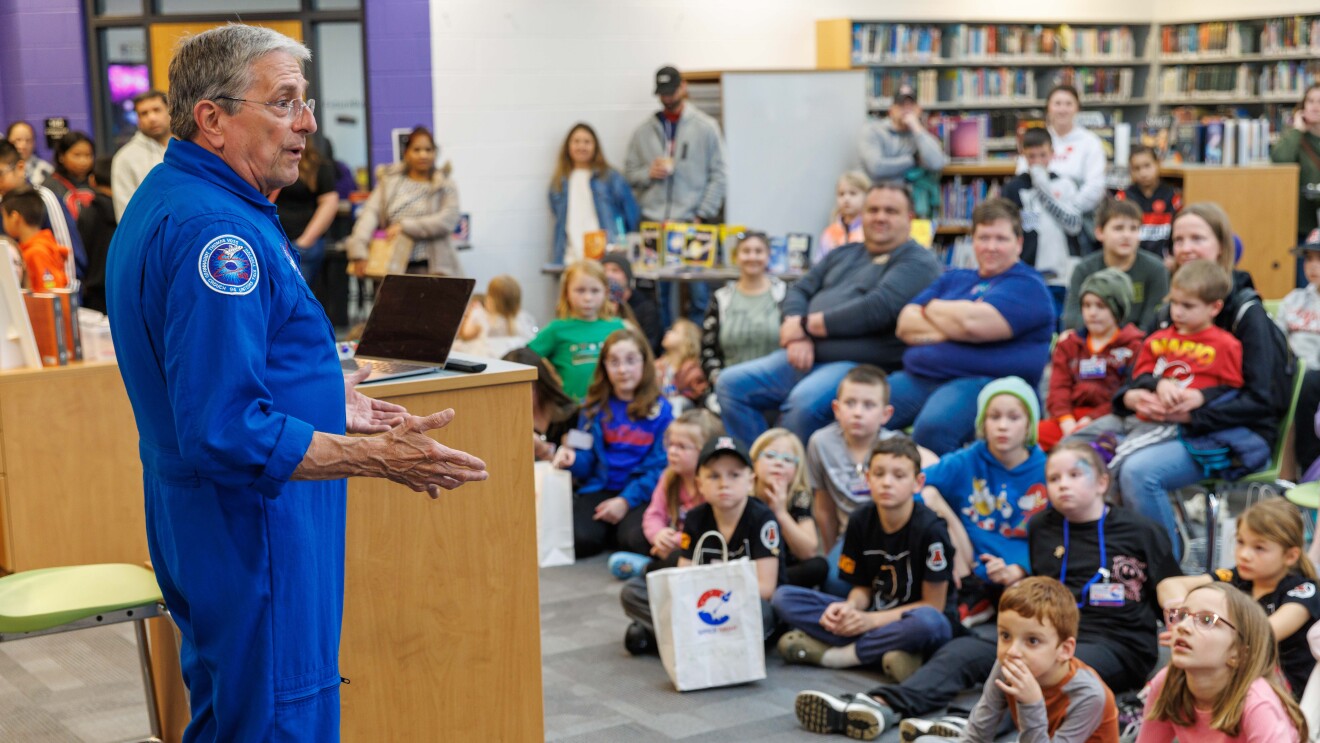 Photo by Ira Graham III Photography and Fil
Photo by Ira Graham III Photography and FilWe operate in dozens of communities around the country, and we work hard and strive to be good neighbors. That means that we show up positively in our community, and where possible, use our scale and abilities to take on some of these communities’ most pressing challenges.
Amazon has instituted localized programs designed to have a lasting impact in the communities around the world where our data center employees work, live, and raise their families. From support for primary and secondary school education, to skills training, funding for local food banks, local renewable energy projects, and more, Amazon's efforts benefit the entire community.
One of these such programs is Amazon Girls’ Tech Series, an ongoing engagement that emphasizes science, technology, engineering, and math (STEM) education for school-aged girls and young women. The program aims to educate, inspire, and empower girls and young women aged 8-24 to pursue careers in technology. Another example is Amazon Think Big Spaces, which are dedicated physical spaces, typically located in a school or designated community space, that provide students, educators, and community members with hands-on technical education and cloud computing training. To date, Amazon has supported more than 80,000 students across the U.S. through our 93 Amazon Think Big Spaces, and inspired more than 6,200 girls and young women through our Girls’ Tech Day events across our data center regions.
Other examples of local community investments and programming include:
- Eastern Oregon: In 2024, Amazon contributed $1.2 million to the nonprofit GRID Alternatives to fund a community solar energy program. The contribution supports the installation of solar photovoltaic systems on rooftops of nonprofit organizations, food banks, schools, and other community buildings across Morrow and Umatilla counties.
- Plain City, Ohio: Amazon and Jonathan Alder Local Schools recently expanded their partnership to include a new Think Big Space—the 20th Think Big activation in Ohio. Additionally, the partnership hosted the second annual Space Night for families, an event focused on STEM education and space exploration.
- St. Joseph County, Indiana: As part of the Amazon Community Fund signature program, Amazon funded 31 community projects in St. Joseph County. One of the recipients of the funds is Unity Gardens and their LaSalle Square project, which is focused on expanding access to fresh food and community spaces. Another project recipient, Cultivate Food Rescue, used the funding to build their pantry ordering software to host a food insecurity data map. The grant will enable the organization to provide over 14,000 meals to neighbors.
- Prince William County, Virginia: Amazon collaborated with Prince William County Parks & Recreation and non-profit KABOOM! to build a 7,500-square-foot, kid-designed play space at Fairmont Park for families in Manassas, Virginia.
Advancing sustainability

We’re constantly working to power our operations more sustainably and progressing toward our Climate Pledge commitment to become net-zero carbon by 2040. This has resulted in Amazon spending billions to support nuclear, renewable energy and battery storage projects in regions where we operate. Some local examples include our investments in 22 renewable energy projects that will provide enough energy to power the equivalent of 357,000 homes in Northern Virginia, and 24 wind and solar projects across Ohio, with a total capacity of 2.7 gigawatts of carbon-free energy.
We’re constantly reevaluating how our data centers operate, working to power them with carbon-free energy and make them more energy efficient. Recent research from Accenture estimates that using AWS’s infrastructure is up to 4.1 times more efficient than using cloud services on-premises, and when workloads are optimized on AWS, the associated carbon footprint can be reduced by up to 99%. This includes new advancements in our data center design to be less carbon-intensive from the ground up, and recently announced new components in power, cooling, and hardware design to make our data centers more efficient.
AWS is also committed to returning more water to communities and the environment than we use in our data center operations. By the end of 2023, AWS was 41% of the way towards becoming water positive. To help make progress toward this goal, AWS is continuously innovating to conserve water within our operations while also investing in water replenishment projects in communities across the U.S.
This includes ongoing innovation in our infrastructure, such as in our US West (Northern California) Region where we switched from the existing cooling system to a direct evaporative cooling system, which reduced annual water use by 85%. Given California’s water challenges, every drop saved makes a difference, which is why AWS is reducing water use and changing the type of water used for cooling. These data centers are among the many AWS data centers that use recycled water or reclaimed wastewater for cooling, instead of potable or drinkable water. After the recycled water runs through the cooling system, it returns to the wastewater facility for another round of treatment so it can be used again.
And in Oregon, AWS uses water for cooling less than 10% of the year and actively looks for opportunities to operate more efficiently and return water to our communities.
Here are more ways Amazon is using recycled and harvested water, including four new projects in the U.S.:
What our community partners are saying
“We are thrilled to see Amazon Web Services expand into rural Virginia with its planned data center campuses. The economic impact of AWS in the Commonwealth is transformational, and these world-class data centers will bring historic capital investment and high-quality, 21st-century jobs.” — Jason El Koubi, president and CEO of the Virginia Economic Development Partnership (VEDP)
“This type of opportunity to create hundreds of high-quality jobs and significant investment in Louisa is why responsible economic growth is a priority for the county. We’re proud to partner with AWS to expand their operations in a world with a growing demand for cloud computing infrastructure.” — Duane Adams, Louisa County Board chairman, Louisa, Virginia
“This is a historic moment for the county. AWS’s plans to locate in Louisa represents an amazing opportunity that benefits our citizens and our community as a whole.” — Christian Goodwin, Louisa County administrator, Louisa, Virginia
"I'm expecting a baby soon, and the I2PA program will enable me to provide for my growing family. I also wanted to challenge gender assumptions and show that women are equally interested in pursuing careers in the skilled technical trades." – Sarah Hidalgo, student at Germanna Community College, Locust Grove, Virginia
"We are so grateful to Amazon for their generosity in helping us brighten the holidays for our East End residents. We see every day how hard our folks work and how much effort and love they invest in their families and community." – George Davies, executive director at Creating Foundations for Hope, Manassas, Virginia
"The I2W workshop opened my eyes to the innovative training initiatives AWS has launched to develop talent pipelines for these in-demand roles. We're excited to join forces and create more programs that connect our students to enriching career opportunities." – Dr. Shashuna Gray, vice president of academic affairs and workforce development at Germanna Community College, Locust Grove, Virginia
"Our partnership with Amazon Web Services has been a game-changer for Tolles and our students. AWS’s support has helped us expand our Cybersecurity program, create hands-on learning experiences, and connect students directly with the skills and certifications they need to launch successful careers. Partnerships like this not only strengthen our programs—they open doors for students and build a stronger future for our entire community." – Todd Hoadley, superintendent, Tolles Career & Technical Center, Plain City, Ohio
“AWS is one of the most impactful investors in the Columbus Region. We’re proud to be home to hundreds of AWS employees and we are the beneficiary of the thousands of jobs they support as they continue to build in Central Ohio. Their projects are creating great jobs and the dollars are being re-invested to make our local communities stronger and our region more globally competitive.” – Kenny McDonald, president and CEO of One Columbus, Columbus, Ohio
“AWS’s investments are helping open doors for our students, giving them hands-on opportunities to build skills and imagine new career pathways. Through initiatives like Think Big Spaces and other local programs, AWS is empowering young people to see a future for themselves in technology and innovation.” – David Stewart, superintendent, Hilliard City Schools, Columbus, Ohio
"AWS fills the gap, the 'we need it now' gap, by offering opportunities that are not occurring within traditional education models. There is never a rock that AWS won't turn over to fill the gaps for skilled tradespeople.” – Craig Mathes, VP of Safety and Human Resources at Team Fishel, an AWS partner in infrastructure regions, Hilliard, Ohio
“Over the last decade, AWS’s engagement and support within the local community has been great. They have supported our local schools and other community-based organizations. In fact, their AWS Community Fund is focused on four key areas: STEAM (Science, Technology, Engineering, Arts, and Mathematics), Education & Access, Sustainability & Environment, and Digital Skills. This initiative represents one of the ways AWS is working to make a positive difference in Central Ohio communities.” – Jeremiah Gracia, executive director of Economic Development for the City of Dublin, Dublin, Ohio
“Since 2012, AWS has been instrumental in diversifying and strengthening Umatilla County's economy. This new office space, coupled with their ongoing partnership with Blue Mountain Community College, shows AWS’s dedication to not just creating jobs, but building careers and opportunities for our residents.” – Dan Dorran, Umatilla County commissioner, Pendleton, Oregon
"AWS has been a strong partner in the growth and success of Eastern Oregon. Their long-term investment has helped drive our regional economy—supporting more than 8,320 jobs each year and adding over $11.8 billion to our GDP since 2012. In Morrow County, their presence means good-paying local jobs, reliable tax revenue, and funding that directly impacts our schools, emergency services, and infrastructure. These are real impacts that make a difference for the people who live and work here.” –Torrie Griggs, CEO of the Boardman Chamber of Commerce, Boardman, Oregon
“Programs like AWS’s Think Big Spaces and Girls’ Tech Programs are opening doors for our students, especially young women to explore STEAM in ways that are hands-on, relevant, and inspiring. These opportunities are helping our students see what’s possible and giving them the tools to dream big, right here in Umatilla County.” – Tricia Mooney, superintendent, Hermiston School District, Hermiston, Oregon
"Our pantry ordering software is built on the AWS platform, and we will soon host our food insecurity data map there, as well. The generous support from The St. Joseph County Community Fund will enable us to provide over 14,000 meals to our food-insecure neighbors." – Jim Conklin, executive director & co-founder, Cultivate Food Rescue, South Bend, Indiana
“Over the past year, Madison County has experienced remarkable progress and momentum following the announcement and construction launch of Amazon’s new data center project. This investment has already had a strong and positive impact on our community—creating new jobs, generating local business opportunities, and reinforcing our county’s reputation as a destination for innovation and economic growth. We’ve seen direct benefits across a range of sectors, from increased demand for skilled labor and trades to greater activity among local contractors, suppliers, and service providers. AWS’s presence is also inspiring renewed investment in infrastructure and workforce development, helping to ensure that our residents are equipped for the high-tech jobs of tomorrow.” – Joey Deason, economic development director, Madison County, Mississippi
"The impact of the newly formed partnership between Amazon and Extra Table is the increased amount of food we are able to distribute and the raised awareness of the pantries we serve in people's local communities. Every Packing Party Event hosts 100 volunteers to package these meals, and at the end, the pantries collect their allocated amount for distribution to their clients—it's a heartening hour for everyone involved." – Amanda Powell, administrative and systems coordinator at Extra Table,Hattiesburg, Mississippi
"The Block Party is our biggest annual event sparking curiosity about tech. With Amazon's support, these interactive exhibits and cloud-powered experiences educated families about the possibilities of STEM and the innovations driving Jackson's future." – Tamika Jenkins, executive director of The Bean Path,Jackson, Mississippi
Next, read more about what is happening in data center communities across the U.S.
